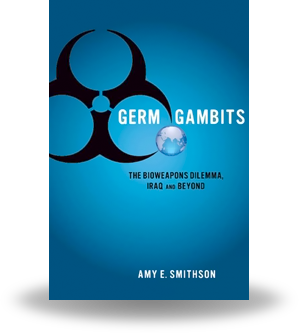November 8, 2011

This new book by CNS expert Amy E. Smithson tells the compelling story of how UN inspectors in the 1990s unearthed the true extent of Iraq’s bioweapons program.
For decades the ability to ascertain whether states are hiding germ weapons programs has been nonexistent because the 1975 bioweapons ban has no inspection measures.
Yet, in 1995 a small United Nations inspection corps pulled off a spectacular verification feat in the face of concerted resistance from Iraq’s Saddam Hussein and popular skepticism that it was even possible to conduct effective biological inspections. Working from sketchy intelligence, the inspectors busted open Iraq’s cover stories and wrested a confession of biowarfare agent production from Baghdad.
This rigorously researched book tells that compelling story through the firsthand accounts of the inspectors who, with a combination of intrepidness, ingenuity, and a couple of lucky breaks, took the lid off Iraq’s bioweapons program.
Reviews
“Smithson provides us with a high-quality study that will be indispensable for understanding the drama contained in the work of breaking the ultimate secrets of Iraq’s bioweapons program, while at the same time it creates a foundation for designs of future arms control regimes and initiatives.”
—Rolf Ekeus, former Executive Director, UNSCOM
“No doubt, UNSCOM proved that skilled gumshoes …. can discover the broad outlines of a state-supported germ warfare effort. Smithson goes beyond this to draw more complex and thoughtful lessons for today …. Smithson warns that global leaders are often quick to warn of biological hazards-terrorism, warfare, and laboratory mishaps-yet fail to follow up their rhetoric with action. This December, diplomats will attend the Seventh BWC Review Conference in Geneva. A copy of Smithson’s book should be mandatory reading for anyone who participates.”
—David Hoffman, 2010 winner of the Pulitzer Prize, author, The Dead Hand (Doubleday)
“Using empirical evidence from the investigation of Iraq’s biological weapons program, this book provides evidence that verification of the Convention could be effectively strengthened. It should be required reading for all involved with the Convention.”
—Malcolm Dando, Professor of International Security, University of Bradford
